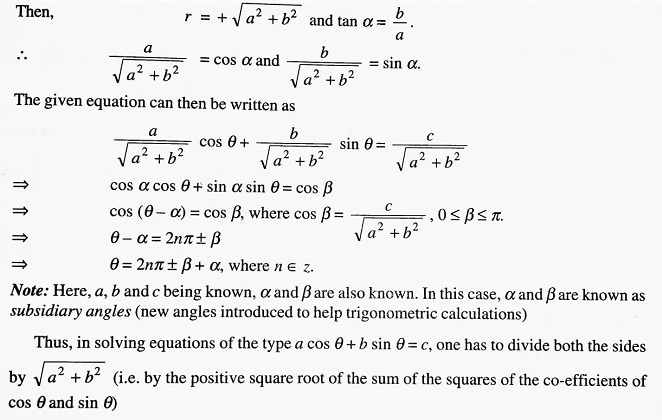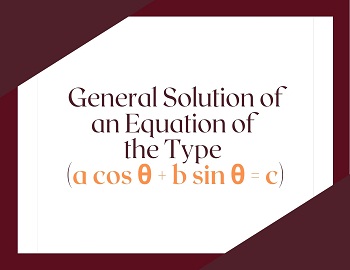General Solution of an Equation:
One may attempt to solve this type of equation by transposing one term from the left to the right side and then squaring both sides. In that way, the equation would be reduced to a quadratic in sin θ or cos θ. Thus, two values of θ would be obtained as the solutions. But as a result of squaring both the sides, an extraneous root may be invited, which would not satisfy the given equation. Thus, a checking is necessary to sort out the extraneous roots. So, in solving equations of the above type, we adopt a different method. Let a = r cos α and b = r sin α, where r > 0 and α is a positive or negative acute angle (as the given equation can always be written with a > 0).

Example: Determine x such that sin4 x + sin4 (π/4 + x) = 1/4
Solution: sin4 x + sin4 (π/4 + x) = 1/4
⇒ 4 sin4 x + 4 sin4 (π/4 + x) = 1
⇒ (2 sin2 x)2 + {2 sin2 (π/4 + x) }2 = 1
⇒ (1 – cos 2x)2 + {1 – cos 2(π/4 + x) }2 = 1
⇒ (1 – cos 2x)2 + (1 + sin 2x)2 = 1
⇒ 2 + cos2 2x + sin2 2x – 2(cos 2x – sin 2x) = 1
⇒ 2 + 1 – 2(cos 2x – sin 2x) = 1
⇒ cos 2x – sin 2x = 1
⇒ (1/√2) cos 2x – (1/√2) sin 2x = 1/√2
⇒ cos (2x + π/4) = 1/√2
⇒ 2x + π/4 = 2nπ ± π/4
⇒ x = nπ, nπ – π/4









Comments (No)